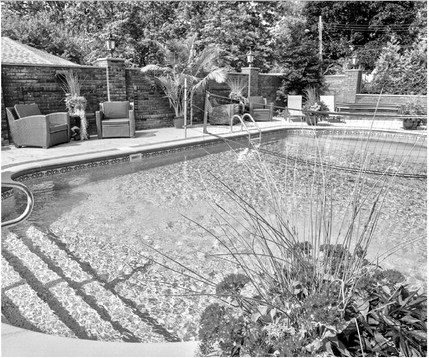Understand the mechanics behind a saltwater filter

Understand the mechanics behind a saltwater filter
Summer is pool season. Come spring, homeowners prepare their backyard pools for several months of leisurely floating or engaging games of aquatic volleyball. This preparation includes uncovering the pool and rebalancing the pool’s chemical levels.
Pool preparation and maintenance also includes installing a working filter. While there are many different types of pool filters and filter mediums, in recent years, saltwater filter systems have been growing in popularity.
Consumers who want to upgrade to a saltwater system may be interested in learning a bit more about how such systems work.
Saltwater systems are those in which chlorine is generated by the system itself. These systems do not usually require the addition of a powdered or liquid form of chlorine. Electrolysis occurs thanks to a chemical process that involves pool water passing through a salt cell and being exposed to a low-voltage current.
This essentially breaks up the sodium chloride molecules (salt) into hypochlorous acid and sodium hypochlorite, which are sanitizing agents. Therefore, saltwater systems are not chlorinefree. They just produce chlorine from a less caustic material.
One of the main advantages to a saltwater system is the constant generation of free chlorine. Pool water chemistry is often broken down into FC (free chlorine) and CC (combined available chlorine). FC is yet untouched chlorine that can do its sanitizing job. CC contains chlorine and chloramines, which are produced when the chlorine comes in contact with urine, sweat and other contaminants present in the pool.
CC is what contributes to the “chlorine smell” of the water.
When there isn’t enough FC and there’s too much CC, pool water levels need to be returned to optimal conditions, usually through a shocking process. However, with saltwater systems, there’s always an abundance of FC being delivered into the water, making levels superchlorinated, and these systems eliminate the formation of CC.
Saltwater chlorine generators require few, if any, additional chemicals, as they produce nearly neutral pH levels. This isn’t always the case with other chlorine sources, which can raise or lower pH or add to the presence of other substances, such as calcium, in the water with calcium hypochlorite sanitizers.
Because these saltwater filtration and chlorine-generating systems are relatively automatic, they also can mean less maintenance. This is handy for homeowners who go on vacation or do not want to be hassled by the daily care other systems may require.
One of the disadvantages to saltwater systems is the cost, which can be prohibitive to some people. According to Thursday Pool Manufacturing, installing the average system costs anywhere from $800 to $2,000. But some feel that cost is offset by the money saved on pool chemicals over the course of a season.
Switching to a chlorine-generating saltwater filtration system can be a worthwhile investment for many pool owners.



Share